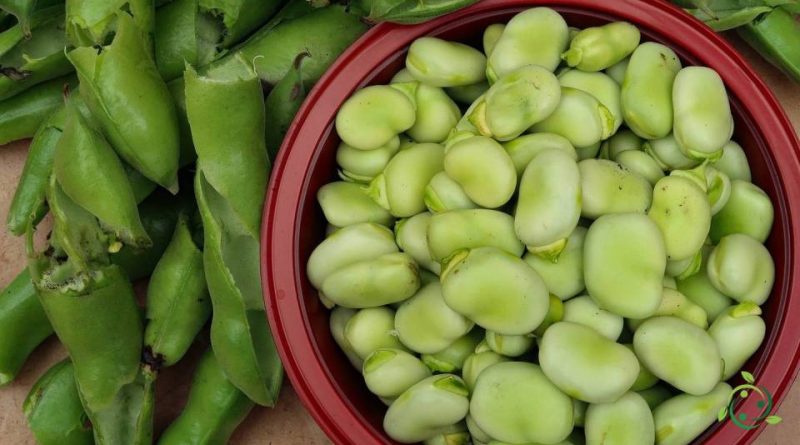Nutritional value of the broad bean
Nutritional value of the broad bean
The broad bean (Vicia faba L. 1753) is a plant of the Fabaceae family, better known as legumes.
Features –
The broad bean is a plant characterized by a taproot root system, with numerous lateral ramifications of reniform structure (root tubercles) in the first 20 cm that host specific nitrogen-fixing bacteria (Rhizobium leguminosarum).
It has a trunk with a quadrangular section, hollow, branched at the base, with indeterminate growth, from 70 to 140 cm high.
The stipulated, glaucous, pinnate-compound leaves consist of 2-6 elliptical leaflets.
The flowers are collected in short racemes which develop at the axil of the leaves starting from the 7th node. Each raceme bears 1-6 pentamer flowers, with wavy banner, white in color streaked with black and white or purple wings with black spot. Fertilization is self-sufficient.
The fruit of the broad bean is an elongated, cylindrical or flattened legume, ending in a point, erect or pendulous, hairless or pubescent that contains from 2 to 10 seeds with evident hilus, initially green and darker in color (from hazelnut to brown) when ripe .
Nutritional factsheet –
Broad beans are legumes that have a high protein quality, superior to beans and very similar to that of chickpeas. They are rich in fiber, potassium and vitamin C, which is however largely altered by cooking and drying.
Below we see the calorie content and nutritional values of the beans.
100 g of beans contain 41 kcal / 171 kj. Furthermore, for every 100 g of this product there are on average:
– Water 83.9 g;
– Carbohydrates 4.5 g;
– Sugars 2.2 g;
– Protein 5.2 g;
– Fats 0.5 g;
– Cholesterol 0 g;
– Total fiber 5 g;
– Sodium 17 mg;
– Potassium 200 mg;
– Iron 1.7 mg;
– Calcium 22 mg;
– Phosphorus 93 mg;
– Vitamin B1 0.11 mg;
– Vitamin B2 0.19 mg;
– Vitamin B3 1.27 mg;
– Vitamin A 11 µg;
– Vitamin C 33 mg.
Obviously the values also depend on the cultivation method and the pedoclimatic conditions.
Property –
Regarding the properties of the beans, it is necessary to distinguish whether we are talking about fresh or dried beans.
Fresh broad beans are a very nutritious and low-calorie legume; dried broad beans are about 4 times more caloric than fresh ones.
Fresh broad beans contain Levodopa (or L-dopa), an amino acid that helps improve the concentration of dopamine in the brain. Levodopa is the active ingredient of the main drugs used in the treatment of Parkinson’s disease.
For this reason, beans are the subject of various studies. These studies aim to evaluate the actual benefit that beans can bring in the treatment of this pathology. The beans, as mentioned, have a good amount of iron and vitamin C which favors their absorption, and are therefore indicated in anemia. Being very rich in dietary fiber, they promote the proper functioning of the intestine. They are also diuretic and beneficial for the kidneys and urinary tract.
Guido Bissanti

